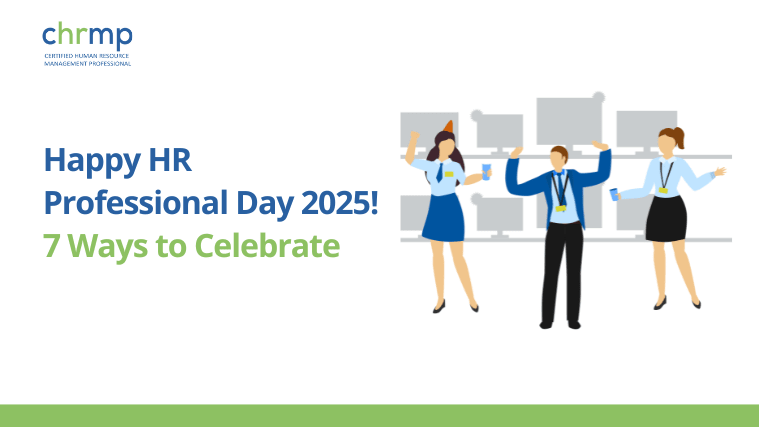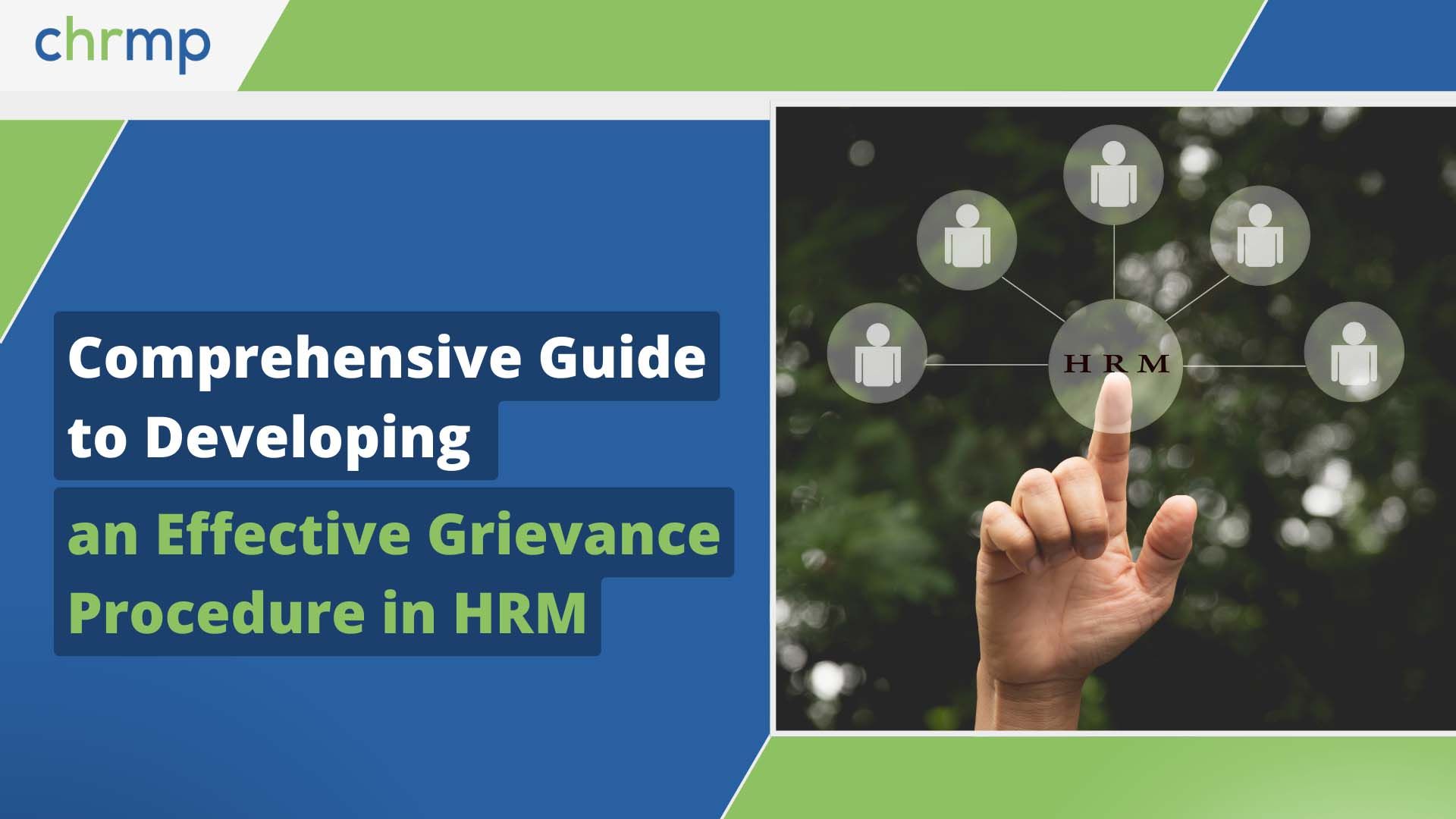A Comprehensive Guide to Developing an Effective Grievance Procedure in HRM
Have you ever considered the impact of unresolved employee grievances on workplace harmony and productivity? A robust grievance handling process is more than just a legal necessity—it is a cornerstone of a healthy organizational culture. In this blog, we will explore how an effective grievance procedure not only resolves conflicts but also reinforces trust and fairness within the workplace, setting the stage for improved morale and sustained productivity.
This guide will walk you through the essential elements of designing, implementing, and maintaining an effective grievance handling process that aligns with both legal standards and best practices.
What is Grievance Handling?
Grievance handling is the process by which organizations address and resolve complaints raised by employees regarding workplace issues. These issues can range from interpersonal conflicts, violations of company policy, to concerns about unsafe or unfair working conditions. An effective grievance handling process provides a structured method for employees to express their concerns, ensuring they are treated fairly, and that issues are resolved efficiently.
Importance of a Grievance Procedure
Why a Structured Grievance Procedure is Crucial
A structured grievance procedure ensures that employee concerns are addressed fairly and efficiently, preventing potential workplace conflicts and fostering a culture of trust and respect. Such procedures are crucial because they:
- Ensure Fair Treatment: Every employee feels that their voice matters and their concerns are taken seriously.
- Maintain Legal Compliance: Adhering to employment laws and regulations to avoid legal pitfalls.
- Enhance Employee Satisfaction: A transparent process improves morale and job satisfaction, directly impacting productivity.
Objectives of the Procedure
The primary goals of a grievance procedure include:
- Fairness: Ensuring all employees are treated equally in the grievance process.
- Transparency: Making the steps and outcomes clear to all parties involved.
- Employee Satisfaction Improvement: Using the procedure as a tool to enhance workplace satisfaction and engagement.
Legal Framework for Grievance Procedures
When developing a grievance procedure, it’s crucial to ensure compliance with both local and national employment laws. These laws set the standards for handling employee grievances and aim to prevent discrimination and unfair treatment in the workplace. Understanding and integrating these legal requirements can help protect both the organization and its employees from potential legal disputes.
Key Examples from Various Jurisdictions:
- United States: Fair Labor Standards Act (FLSA) The FLSA sets standards for minimum wages and overtime but doesn’t directly address grievances. Grievances related to these issues must be resolved promptly to comply with the act and avoid penalties.
- United Kingdom: Employment Rights Act 1996 This act mandates a clear grievance mechanism, aligning with the Acas Code of Practice, which includes provisions for written procedures and the right to be accompanied during hearings, particularly for cases like unjust dismissal or discrimination.
- India: Industrial Disputes Act, 1947 Requires grievances about unfair labor practices to be resolved quickly and mandates the establishment of grievance redressal committees with defined roles and procedures.
- Australia: Fair Work Act 2009 Stipulates that grievance procedures must address issues such as bullying, discrimination, and wage disputes fairly and confidentially, with clear escalation paths.
- European Union: General Data Protection Regulation (GDPR) Affects grievance procedures by regulating how personal data related to grievances (like witness statements and reports) is managed, ensuring privacy protection during the grievance process.
Compliance Best Practices:
- Regular Training: Regularly train HR personnel and managers on the legal aspects of grievance handling to ensure everyone understands their roles and responsibilities under current laws.
- Documentation and Record-Keeping: Maintain meticulous records of all grievances and their outcomes to provide evidence of compliance and to assist in resolving any future legal challenges.
- Policy Reviews and Updates: Regularly review and update grievance policies to reflect changes in the law. This ensures ongoing compliance and adapts to new legal precedents or changes in employment law.
Designing the Grievance Procedure
Steps of the Grievance Handling Procedure
An effective grievance handling procedure is a critical component of HR management, ensuring that employee concerns are addressed systematically and fairly. Below is a detailed breakdown of the typical steps involved in a grievance handling procedure:
- Filing a Grievance Employees initiate the process by submitting their grievances through designated formal channels. This could be through a digital system, a specific grievance form, or a direct submission to a designated HR representative.
- Acknowledgment Upon receiving the grievance, HR acknowledges receipt, either through an automated response or a personalized communication. This acknowledgment confirms that the grievance has been logged and informs the employee of the next steps.
- Investigation A thorough investigation of the grievance is conducted to gather all relevant facts and perspectives. This may involve interviewing the employee who filed the grievance, potential witnesses, and reviewing related documentation.
- Resolution Based on the findings from the investigation, efforts are made to resolve the grievance. This could involve mediation between parties, corrective actions, or other forms of dispute resolution techniques.
- Appeal If the resolution is not satisfactory to the employee, they are provided with the option to appeal the decision. This second stage of review is typically handled by a higher authority within HR or a special grievance committee.
Roles and Responsibilities in Grievance Handling
Effective grievance handling requires clear roles and responsibilities for all parties involved.
- HR: Manages the Process and Ensures Compliance and Fairness HR is primarily responsible for overseeing the grievance process. This includes receiving grievances, conducting or coordinating investigations, ensuring that the process adheres to legal and internal policy standards, and maintaining fairness throughout the proceedings.
- Management: Engages with the Process and Aids in the Factual Investigation Management’s role in the grievance process often involves providing information and context about the situation or behaviors in question. They may also be tasked with implementing resolutions or corrective actions as directed by HR.
- Employees: Required to Follow the Grievance Procedure and Cooperate in Investigations Employees are expected to utilize the formal grievance process responsibly and provide truthful information during investigations. They should engage with the process as outlined in the company’s HR policies.
Ensuring Confidentiality Throughout the Process
Maintaining confidentiality means keeping all details of the grievance restricted to those directly involved in resolving it. This includes conversations, written communication, and any records or notes taken during the investigation.
Implementation of Grievance Procedures
Effective implementation of a grievance procedure is critical to its success. This involves ensuring that all HR staff and managers are well-trained and that the procedure is communicated effectively to all employees.
Training
Training programs for HR staff and managers should focus on:
- Understanding the Legal Aspects: Comprehensive understanding of laws affecting the grievance process.
- Handling Sensitive Situations: Techniques for managing conflicts sensitively and fairly.
Communication
Effective methods to communicate the grievance procedure include:
- Employee Handbooks: Detailed sections on the grievance process.
- Training Sessions: Regular sessions to remind staff of their rights and responsibilities.
Tools and Resources
Effective grievance handling requires a structured approach supported by well-designed tools and resources. These help ensure that the process is conducted fairly, transparently, and efficiently.
Documentation
Essential documents include:
- Grievance Forms: Standardized forms for submitting grievances.
- Record-Keeping Templates: For documenting steps taken and outcomes.
Technological Solutions
Software that supports the grievance process can help in tracking cases and maintaining records efficiently.
Handling Grievances: Techniques and Decision-Making
Effectively handling grievances is pivotal to maintaining trust and fairness in the workplace. It involves a systematic approach comprising investigation techniques, problem-solving approaches, and careful decision-making. Each component is designed to ensure that grievances are addressed thoroughly and impartially.
Investigation Techniques
Handling grievances begins with a robust investigation process. Here’s a detailed look at essential investigation techniques:
- Gather All Relevant Information: This involves collecting comprehensive details from all involved parties, including the complainant, the accused, and any witnesses, and reviewing relevant documents and communications to construct a complete and unbiased picture of the situation for informed and equitable decision-making.
- Maintain Neutrality: Investigators must remain neutral and unbiased, avoiding preconceived notions and personal relationships to ensure the investigation is fair and its findings are accepted by all parties, maintaining the integrity of the grievance process and building employee trust in HR practices.
Problem-Solving Approaches
Once the investigation is complete, the focus shifts to resolving the grievance. Common problem-solving approaches include:
- Mediation: Mediation involves a neutral third party facilitating a discussion between the parties involved in the grievance to help them reach a mutually acceptable resolution.
- Negotiated Settlements: This approach involves negotiating terms that satisfy both parties, which may include compromises or agreeing on certain corrective actions.
Decision Making
Decisions should be:
- Based on Facts: Ensure all decisions are grounded in factual evidence from the investigation.
- Documented: Record the rationale for decisions to ensure transparency.
Monitoring and Evaluation
- Feedback Mechanisms Regular surveys and feedback sessions help gather insights into the effectiveness of the grievance process.
- Continuous Improvement Use feedback to refine and improve the grievance procedures, ensuring they remain effective and relevant.
Case Study: Ford Motor Company – Dispute Resolution Process
Ford Motor Company implemented an innovative dispute resolution program called the “Ford-UAW Employee Dispute Resolution Process” (EDRP) to address grievances effectively. This process, developed in collaboration with the United Auto Workers (UAW) union, provides a structured, multi-step approach to resolving disputes at various levels, from informal one-on-one meetings to formal arbitration. The initiative has significantly reduced litigation costs and improved employee relations by fostering a cooperative approach to conflict resolution.
Conclusion
Summary and Final Thoughts
An effective grievance-handling process transcends mere compliance with legal requirements; it is fundamental to cultivating a resilient, responsive, and respectful workplace culture. By implementing a thorough and fair grievance procedure, organizations demonstrate their commitment to justice and ethical practices, which reinforces trust among employees. This trust, in turn, enhances employee engagement and retention by ensuring that everyone feels valued and heard.
Ultimately, such a process not only mitigates conflicts but also promotes a positive organizational climate, where employees are motivated to contribute to their fullest potential, driving overall business success.
Call to Action
Are you ready to reevaluate and strengthen your grievance procedures? Start today by reviewing your current policies and considering how you can incorporate these insights to better serve your employees and protect your organization.



